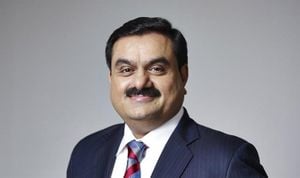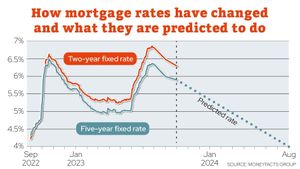A Stunning Celestial Show Lights Up the Skies
The Aurora Borealis, or Northern Lights, offers breathtaking views both from the ground and beyond. Recently, these celestial wonders have been showcased by NASA's very own astronaut Matthew Dominick, who captured stunning footage of the phenomenon from the International Space Station (ISS).
Matthew Dominick, commander of NASA's SpaceX Crew-8 mission, described his thrilling experience of viewing and filming the aurora borealis from space. He began his mission aboard the ISS on March 3, 2024, where he is set to spend six months engaged in scientific research and exploring the cosmos.
Filming this natural wonder wasn't just routine for Dominick; it was magical. His timelapse video, which he shared on social media, displays the colorful lights dancing across the Earth’s atmosphere, weaving between breathtaking sunrises.
This celestial ballet results from the sun’s activity, where coronal mass ejections send energized particles hurtling toward Earth at mind-boggling speeds of up to 45 million miles per hour. When these charged particles collide with gases in the Earth's atmosphere, the result is the dazzling light display we know and love.
On another front, the Northern Lights have been captivating stargazers on Earth as well. Just as Matthew Dominick was filming from space, the UK experienced its own spectacular display of the auroras, particularly visible from regions like Yorkshire and North Yorkshire.
Last evening, residents were treated to awe-inspiring views and stunning photographs flooded social media. With help from geomagnetic storms reported by the U.S. National Oceanic and Atmospheric Administration (NOAA), many eager photographers successfully captured the spectacle.
These geomagnetic storms stem from intense solar activity, mainly caused by coronal mass ejections, which have heightened the odds of witnessing auroral displays. Meteorologists noted the surge of activity promising beautiful night skies.
Yet, the beauty of the Aurora Borealis doesn’t stop with the series of colorful lights. According to the Met Office's predictions, more auroras could grace the UK sky, thrilling residents eager to witness this natural phenomenon.
Krista Hammond from the Met Office offered insights on the expected conditions. “Multiple coronal mass ejections from the sun are on track to reach Earth, increasing the potential for aurora visibility,” she stated, emphasizing the excitement for upcoming nights.
The best chances for catching the Northern Lights were said to be between 10 PM and 3 AM. With reports of ideal conditions, locations across the northern regions of the UK, particularly Scotland and Ireland, have become prime viewing spots.
Back to the ISS, Dominick shared his thoughts on the mesmerizing experience. "Timelapse of the moon setting against streams of red and green aurora followed by sunrise lighting up Soyuz with light blue. The aurora have been amazing these past few days," he reflected on social media.
His majestic footage not only serves as encouragement for those on Earth to look up but also sparks curiosity about our universe. The bright hues contrasting against the darkness of space highlight the beauty of our planet from above.
Social media users felt joy watching his footage. Enthusiastic comments from viewers said it felt like living in the future, where humans can orbit Earth and send such wonder back for all to enjoy.
The combination of modern technology, such as space missions, with the wonders of nature creates a captivating narrative; one where people can connect even during their busy lives. The public is encouraged to share what they spot and contribute to the beautiful collective memories we create under nature's showcases.
So whether you're gazing at the Northern Lights from Yorkshire or experiencing the show from the ISS, the awe of the Aurora Borealis unites us all. The vibrant lights remind us of the extraordinary events happening across the universe and bring hope for future explorations and discoveries.
It seems the cosmos has many more secrets to unfurl, and every observation, whether from below the clouds or above them, adds to our shared human experience.



